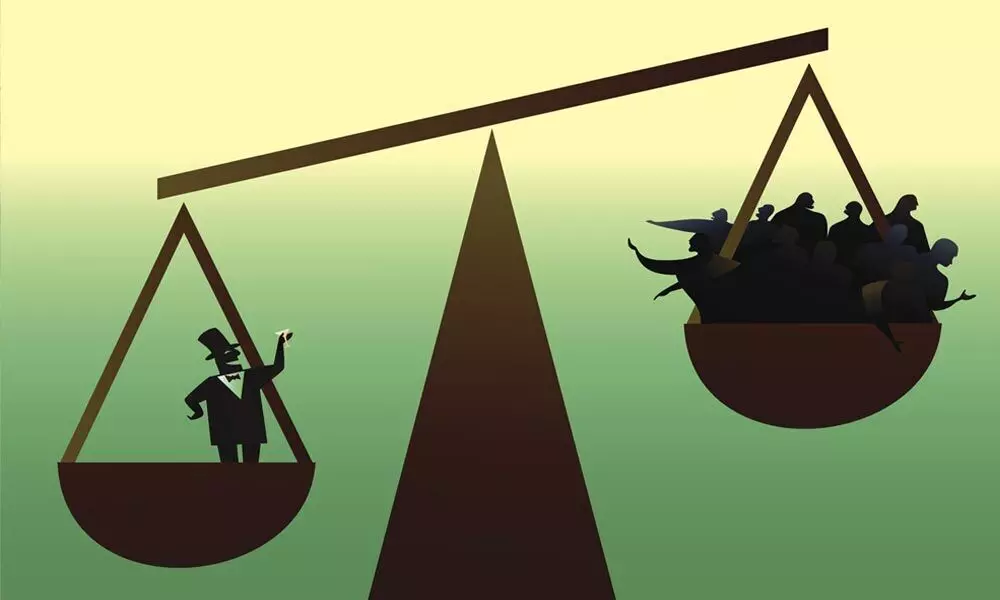Wealth inequality isn't inevitable, it's a political choice
Learning from policies implemented in other countries or at other points of time is critical to design fairer development pathways
image for illustrative purpose

The richest 10% of the global population currently takes 52% of global income, whereas the poorest half of the population earns 8.5% of it. On average, an individual from the top 10% of the global income distribution earns €87,200 ($122,100) per year, whereas an individual from the poorest half of the global income distribution makes €2,800 ($3,920) per year
Income and wealth inequalities have been on the rise nearly everywhere since the 1980s, following a series of deregulation and liberalization programs which took different forms in different countries. The rise has not been uniform: certain countries have experienced spectacular increases in inequality (including the US, Russia and India) while others (European countries and China) have experienced relatively smaller rises. Inequality is not inevitable, it is a political choice.
While inequality has increased within most countries, over the past two decades, global inequalities between countries have declined. The gap between the average incomes of the richest 10 per cent of countries and the average incomes of the poorest 50 per cent of countries dropped from around 50x to a little less than 40x. At the same time, inequalities increased significantly within countries. The gap between the average incomes of the top 10 per cent and the bottom 50 per cent of individuals within countries has almost doubled, from 8.5x to 15x.This sharp rise in within country inequalities has meant that despite economic catch-up and strong growth in the emerging countries, the world remains particularly unequal today. It also means that inequalities within countries are now even greater than the significant inequalities observed between countries.
The richest 10 per cent of the global population currently takes 52 per cent of global income, whereas the poorest half of the population earns 8.5 per cent of it. On average, an individual from the top 10 per cent of the global income distribution earns €87,200 ($122,100) per year, whereas an individual from the poorest half of the global income distribution makes €2,800 ($3,920) per year.
Global wealth inequalities are even more pronounced than income inequalities. The poorest half of the global population barely owns any wealth at all, possessing just 2 per cent of the total. In contrast, the richest 10 per cent of the global population own 76 per cent of all wealth. On average, the poorest half of the population owns PPP €2,900 per adult, i.e. $4,100 and the top 10 per cent own €550,900 (or $771,300) on average.
The rise in private wealth has also been unequal within countries and at the world level. Global multimillionaires have captured a disproportionate share of global wealth growth over the past several decades: the top 1 per cent took 38 per cent of all additional wealth accumulated since the mid-1990s, whereas the bottom 50 per cent captured just 2 per cent of it. This inequality stems from serious inequality in growth rates between the top and the bottom segments of the wealth distribution. The wealth of richest individuals on earth has grown at 6 to 9 per cent per year since 1995, whereas average wealth has grown at 3.2 per cent per year. Since 1995, the share of global wealth possessed by billionaires has risen from 1 per cent to over 3 per cent. This increase was exacerbated during the Covid pandemic. In fact, 2020 marked the steepest increase in global billionaires' share of wealth on record.
The wealth of the 10 richest billionaires in India would be enough to fund the schooling and higher education of India's children for more than 25 years. A 1 per cent tax on the wealth of the top 98 Indian billionaires can fund the total annual expenditure of the Department of School Education and Literacy under the Ministry of Education.
At $719 billion (Rs 53 lakh crore), India's 142 billionaires are now worth more than the poorest 555 million Indians – more than half a billion people. India's billionaires have seen their combined fortunes more than double during the pandemic and the number of Indian billionaires shot up by almost 40 per cent since 2020.
Just look at the top 10 richest people globally: their wealth has doubled during the Covid-19 pandemic, while 99 per cent of the global population has seen a decline in their wealth and income. That's the hard reality, that [inequality] is exploding. Look at the India numbers. India had 102 billionaires last year, and now it's 142. On the other hand, the most conservative estimates say that at least 4.6 crore people (46 million) have slid into poverty in India, while there are some studies that are saying that this goes up to 150 to 160 million people. The United Nations says that half of the new poor globally are coming from India. So what we're looking at is inequality reaching obscene proportions.
Revenue gains that would come from a modest progressive wealth tax on global multimillionaires. Given the large volume of wealth concentration, modest progressive taxes can generate significant revenues for governments. In this scenario, 1.6 per cent of global incomes could be generated and reinvested in education, health and the ecological transition. Inequality is always political choice and learning from policies implemented in other countries or at other points of time is critical to design fairer development pathways.

